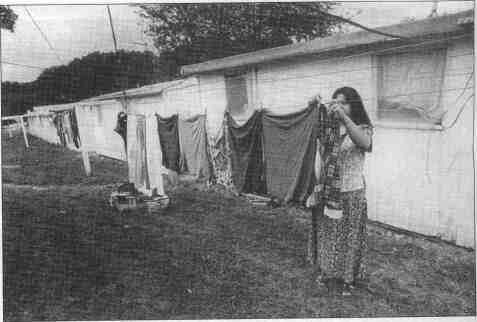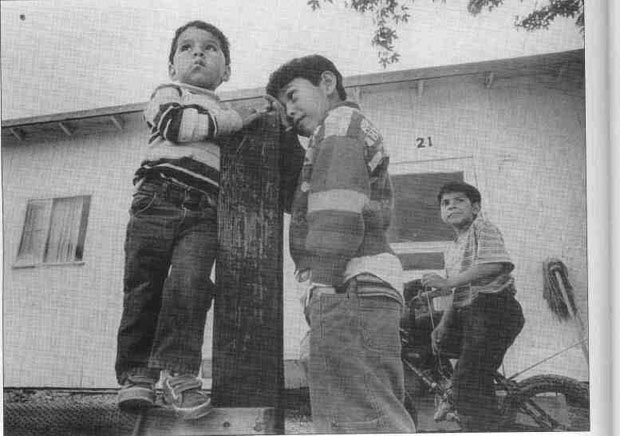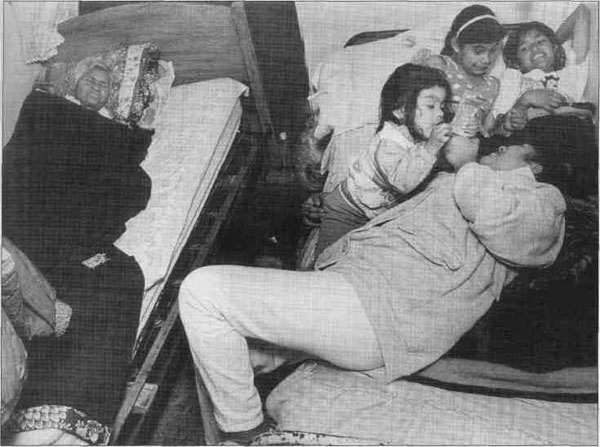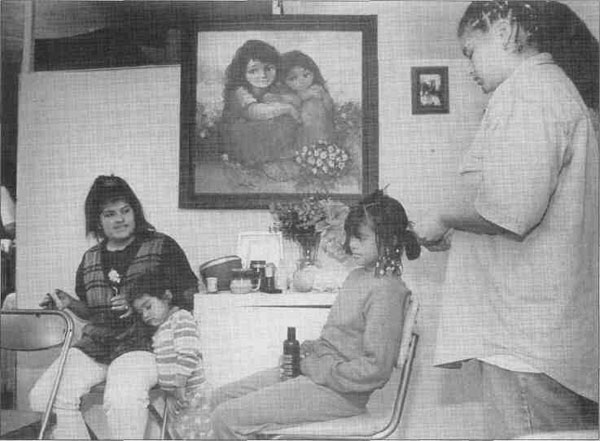|
Photographs by JUDY LUTZ SPENCER
A portrait:
The hand-me-down life of Illinois migrants
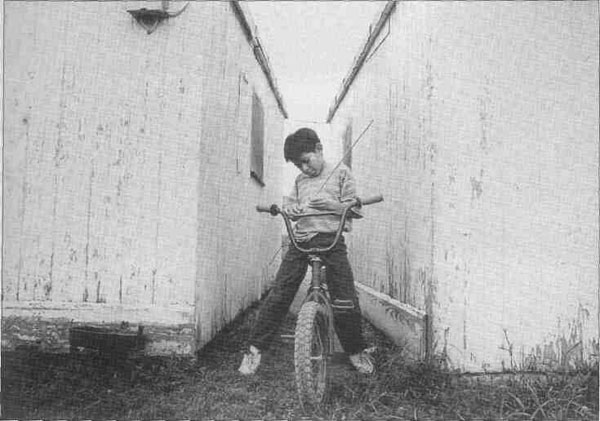 Jorge Garanzuay finds plenty to keep him busy near his home at the Princeville migrant camp. In fact, the camp is more than a collection of white huts with flaking paint. It's a village unto itself, with a language and a culture all its own. Most of the workers are longtime neighbors. And many return to Princeville every year for decades, one generation following another.
Jorge Garanzuay finds plenty to keep him busy near his home at the Princeville migrant camp. In fact, the camp is more than a collection of white huts with flaking paint. It's a village unto itself, with a language and a culture all its own. Most of the workers are longtime neighbors. And many return to Princeville every year for decades, one generation following another.
Continued on next page >
August 1995/Illinois Issues/15
16/August 1995/Illinois Issues
|
(ABOVE LEFT) Gloria Marin uses the community clothesline behind her home. The families also share a laundromat. About 50 years ago, Hispanic workers took over the migrant jobs in Illinois. Many of them drive up each year from Texas.
(LEFT) Young boys of the camp wait for transportation to the gym in the Princeville school. Two area churches have organized recreation activities for the younger children of migrants.
(ABOVE) The families are close-knit. Here, Marie Mauricio tries to sleep while her granddaughters hold a slumber party. Clockwise from left: Francis Carrillo; a friend, Jovanna Vasquez; Gladys Carrillo; and big sister Esmerelda Carrillo.
(RIGHT) The sign on the men's communal shower announces a Sunday Mass in Spanish. The women share their own washroom facilities.
Continued on next page >
|
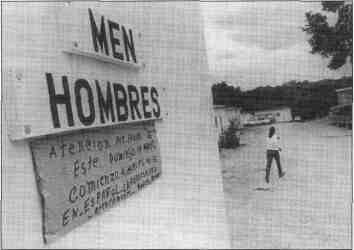
|
August 1995/Illinois Issues/17
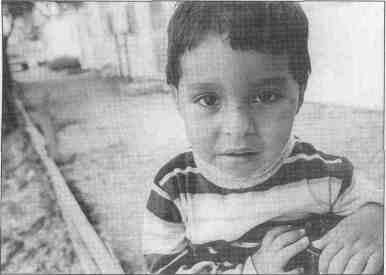
|
(LEFT) Julio Rodriguez meets a guest in his community. It took awhile for the town of Princeville to get used to the migrant workers. And vice versa. Though there may be a comfortable familiarity now when migrants return to Illinois each spring, the cultures have clashed in the past. Elva DeLuna of the Seven Oaks Child Development Center has spent her whole life as a migrant and remembers slights at other camps when she was a child. In more than one town, she remembers the migrant kids being rounded up before school, taken to locker rooms, checked for lice and given showers.
|
18/August 1995/Illinois Issues
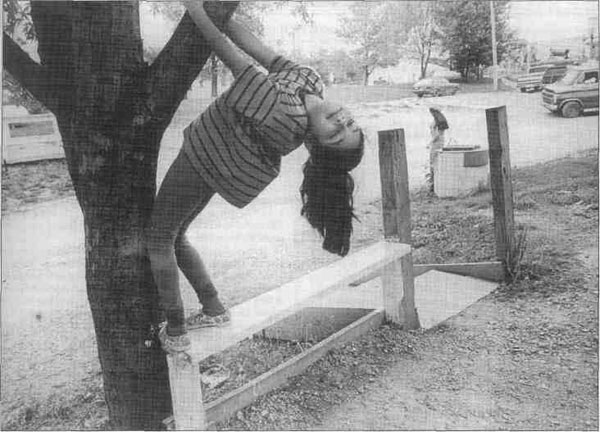
(ABOVE LEFT) Esmerelda Carrillo fixes her sister Gladys' hair. They are joined by little sister Francis and a friend, Isela Rendez. The cabins, which face inward from the road, are two-room, one-level boxes with cold running water. The space is often shared by an extended family of brothers, sisters, mothers, fathers, cousins, aunts and uncles. Inside the homes there are stoves, refrigerators, microwave ovens and televisions. Outside, some workers have added special touches, like gardens, to personalize their cabins. The income of migrants ranges from $4.80 to $10 an hour. Rent is $4 a week.
|
(ABOVE) After being dropped off from school, Anna DeLuna, who is deaf, finds joy in playing on her favorite tree just outside her home. Playground equipment sits behind the first row of cabins. And someone has put up a volleyball net. Though there are television sets in many of the cabins, the children spend little time watching. Instead, they manage to amuse themselves by playing games outside and exploring the environment around the camp. Before bedtime, which comes early, they will run themselves ragged, burning off preadolescent energy until they're exhausted.
|
August 1995/Illinois Issues/19
|



